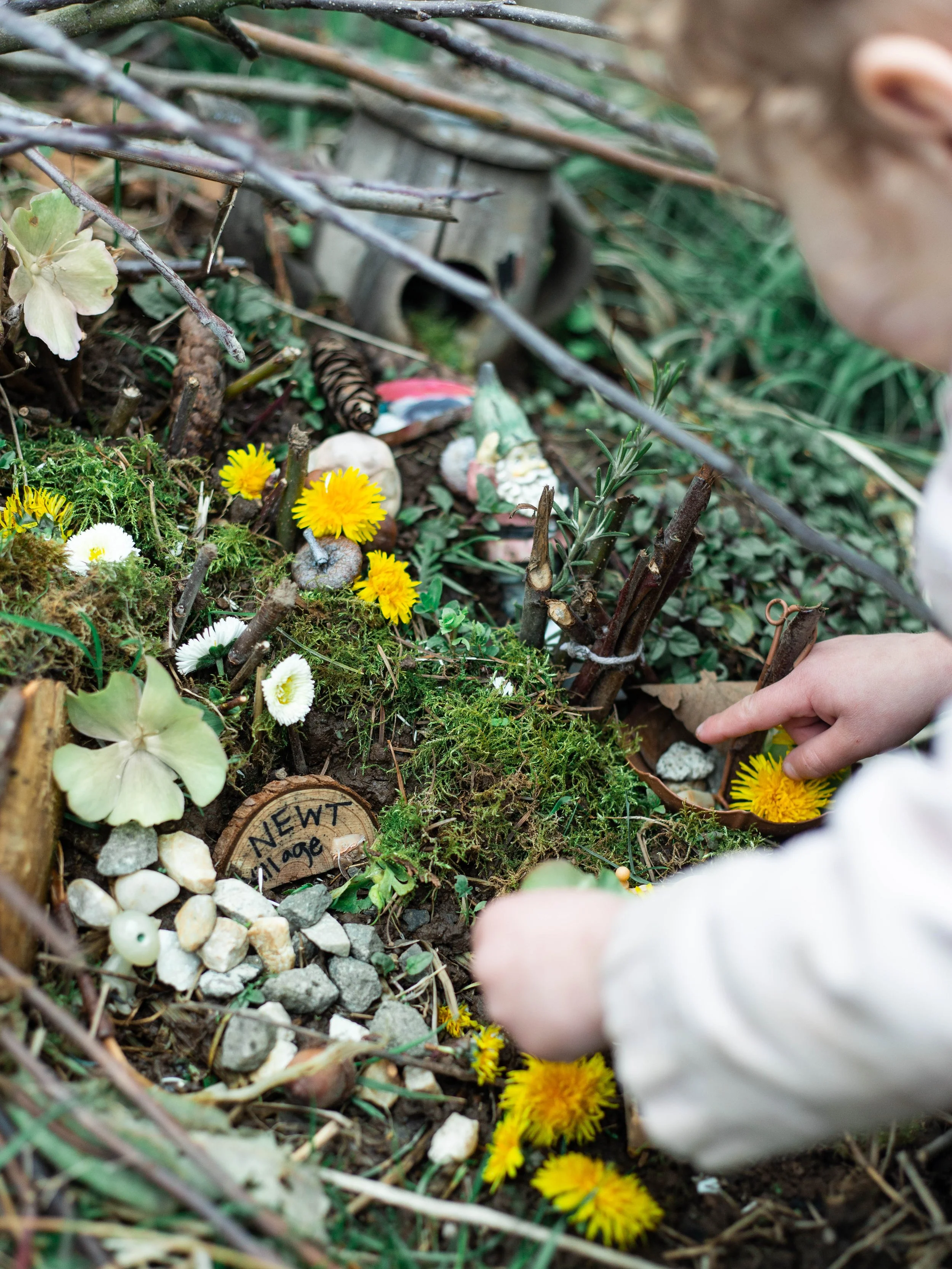This Apple Rum Bundt Cake was adapted and slightly modified from Real Simple Magazine. If you are watching your sugar or alcohol intake, this IS NOT for you! It is boozy indeed! Feel free to edit the amount of rum you use.
Read MoreA Tiny Nature Village
Did you know that leaving piles of sticks and yard debris in your yard encourages tiny ecosystems to thrive? I know I know, it looks un-tidy but hear me out. We’ve all battled slugs who like to eat our favorite flowers. Guess who will eat those slugs for you…frogs will! Guess where frogs like to live…in piles of sticks and moist yard debris! Piles of random things can look messy in a yard so why not spruce it up and make all the gnomes and faeries happy at the same time! Invite your kids to hunt for moss, flower petals, acorns, sticks and rocks. Then construct whatever sort of structure or scene you find beautiful. To top it off, you can put LED candles around the village to add some sparkle at night. We found these solar powered tea lights to enjoy by moonlight. Watch this reel from my instagram below…and godspeed on your moss hunt!
Sweet Peas!
SWEET PEA , Lathyrus odoratus, is a flowering plant in the genus Lathyrus in the family Fabaceae (legumes), native to Sicily, southern Italy and the Aegean Islands.
Sweet peas are one of my favorite flowers to grow due to their delicate look, fragrance and vigorous blooms if properly cared for. Even more wonderful about Sweet Peas, they don’t mind the cold! So they are the perfect seed to start early in a container while the ground is still cold. They come in a variety of incredible colors and fragrances…here are a few of my favorites pictured below…
You can start your sweet peas early, especially if you give them a bit of shelter. Soak them for a couple hours before your start them. You’ll need seedling mix and a small container to put the mix in. Old yogurt cups, jello cups, egg crates, and berry clamshells work great. Make sure to poke holes in the bottom of your containers for drainage. Simply fill the container with seedling mix, make a small hole in the soil with your index finger, then drop one sweet pea seed in. Label by what variety it is…and you’re done!
I like to start my sweet peas at the beginning of March and I grow A LOT of them. I like to make a big splash with many different colors for bouquets all season long. Once the sweet peas are about 2 inches tall you can harden them off by moving them to a larger container in an area more open to the climate. The idea is to expose them, gently, to the climate so they are ready to thrive where you choose to plant them. Once they are (about) 3 inches tall, you can plant them out.
Where to plant them? They like well composted soil with lots of sun. And they certainly need a trellis to help train them upwards! You can make a trellis from bamboo and twine, tree branches and twine, chicken wire, old fencing or you can buy a fancy one. Once you have planted your sweet peas and they are established…they need to be pinched off. This means literally pinching off the top 1/4 of the plants. It seems violent but it will help your plant produce more blooms. As you start seeing blooms watch for little curly “arms” sprouting out from the vines and attaching themselves to things. Snip these when you see them as they take energy away from the blooms.
When you cut sweet peas for a bouquet give yourself as much stem as you can. If you add a little bit of sprite (soda) to the water you’ll get a longer vase life out of them. The more you cut sweet peas, the more they will grow! So cut away!





